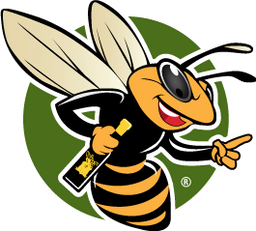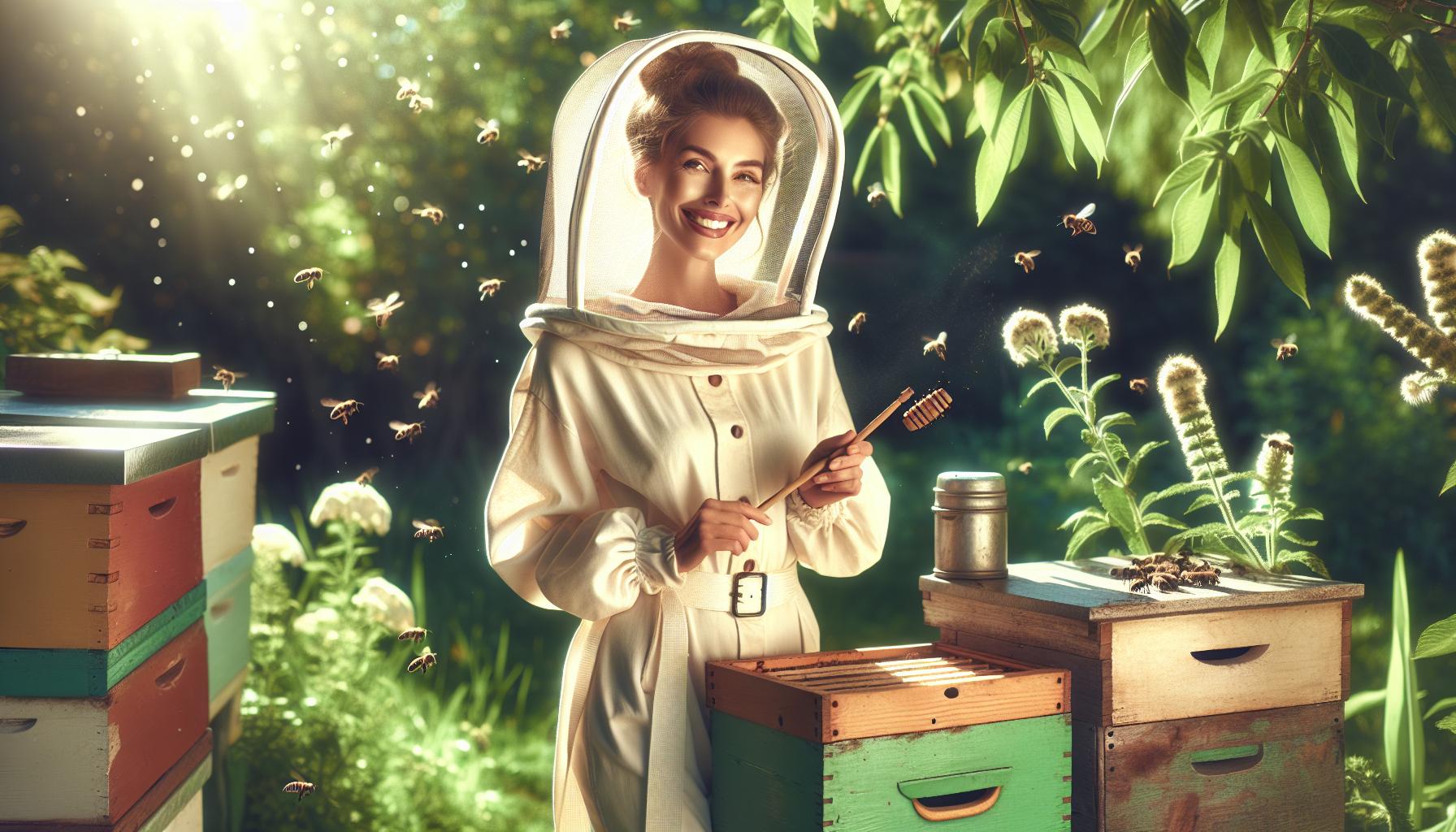Beekeeping is more than just a hobby; it’s a rewarding journey into the fascinating world of bees. To ensure a successful and safe experience, having the right beekeeping gear is essential. From protective clothing to hive tools, each piece of equipment plays a crucial role in maintaining healthy colonies and harvesting honey.
Investing in quality gear not only enhances the beekeeper’s safety but also improves efficiency during hive inspections and maintenance. Whether you’re a novice or an experienced apiarist, understanding the various types of beekeeping gear available can make all the difference. With the right tools at hand, beekeepers can foster thriving hives and contribute to the vital ecosystem these pollinators support.
Overview of Beekeeping Gear
Beekeeping gear ensures beekeepers' safety and productivity while promoting the health of bee colonies. Essential gear includes protective clothing, hive tools, storage equipment, and accessories.
Protective Clothing
Protective clothing shields beekeepers from stings and allergens. Key items include:
-
Bee Suits: Full-body suits provide comprehensive protection and ventilation.
-
Gloves: Specialized gloves protect hands while maintaining flexibility for delicate tasks.
-
Veils: Face veils safeguard the face and neck, ensuring clear visibility.
Investing in high-quality, breathable protective clothing enhances comfort and safety during hive inspections.
Hive Tools
Hive tools are indispensable for managing colonies and conducting inspections. Essential tools include:
-
Hive Tool: A multipurpose implement for prying apart hive components and scraping excess wax.
-
Bee Brush: A soft-bristled brush for gently moving bees without causing harm.
-
Frame Gripper: A handy accessory for lifting and inspecting frames with minimal disturbance.
Using the right tools simplifies hive maintenance and promotes efficient beekeeping practices.
Bee Smokers
Bee smokers calm bees during hive inspections, reducing their aggression. Components include:
-
Smoker Body: A durable metal container to hold fuel.
-
Bellows: A device to create and direct smoke.
-
Fuel Options: Natural materials like pine needles, burlap, or untreated wood shavings.
Smoke application creates a tranquil environment, facilitating safer interactions with bees.
Storage Equipment
Storage equipment preserves honey and beekeeping supplies. Common items include:
-
Honey Extractor: A device that uses centrifugal force to efficiently extract honey from frames.
-
Containers: Airtight containers keep honey fresh and free from contaminants.
-
Bee Feeders: Tools that provide sugar syrup to colonies during nectar shortages.
Additional Accessories
Additional accessories enhance the beekeeping experience. Popular options include:
-
Queen Markers: Tools for identifying and marking the queen bee.
-
Bee Escapes: Devices to manage bee traffic during honey harvesting.
-
Observation Hives: Clear enclosures for studying bee behavior without disrupting the colony.
Advanced Beekeeping Equipment
Advanced equipment provides greater insights into bee behavior and enhances productivity. Two notable tools are honey extractors and observation hives.
Honey Extractors
Honey extractors are essential for efficient honey harvesting. These devices use centrifugal force to extract honey without damaging the comb. Options include:
-
Manual Extractors: Suitable for small-scale operations, requiring physical effort.
-
Electric Extractors: Ideal for larger operations, offering speed and ease.
Selecting an extractor with adjustable speed settings and durable construction ensures long-term usability.
Observation Hives
Observation hives allow for close study of bee activity, including brood rearing and foraging patterns. These enclosures are valuable for education and community outreach. Proper placement in shaded, well-ventilated areas maintains optimal conditions for the bees.
Choosing the Right Gear
Selecting the right beekeeping gear is vital for safety and efficiency. Key considerations include:
-
Experience Level: Beginners should prioritize basic protective clothing and hive tools. Experienced beekeepers may require specialized equipment.
-
Climate Conditions: Hot climates call for breathable materials, while colder regions may need insulated gear.
-
Hive Type: Different hive designs, such as Langstroth or top-bar hives, require specific tools.
-
Budget: Quality gear varies in price; a clear budget helps prioritize essential items without compromising safety.
Recommended Brands
|
Brand |
Product Type |
Description |
|
BeeSmart |
Protective Clothing |
Durable, breathable bee suits and gloves. |
|
Mann Lake |
Hive Tools |
A wide range of tools, including smokers and brushes. |
|
Maxant |
Honey Extractors |
Manual and electric extractors for all hive sizes. |
|
Brushy Mountain |
Observation Hives |
Designed for study and non-intrusive observation. |
Maintenance and Care of Beekeeping Gear
Proper maintenance ensures the longevity and performance of beekeeping gear. Regular upkeep prevents equipment failure and enhances safety.
Cleaning Protective Clothing
Wash bee suits and veils with mild soap and water; avoid harsh detergents. Air-dry to retain material integrity and prevent shrinkage.
Sanitizing Hive Tools
Clean hive tools with soap and water after each use to prevent disease transfer. Periodically disinfect with a bleach solution or rubbing alcohol.
Inspecting and Repairing Gear
Regularly check suits for tears, gloves for punctures, and zippers for functionality. Repair or replace damaged items promptly.
Storing Equipment Properly
Store bee suits in a cool, dry place. Keep hive tools in a clean container to prevent rust. Ensure honey extractors and containers are thoroughly cleaned and dried before storage.
Maintaining Smoker Functionality
Dispose of ash after each use and clean the smoker’s chamber to prevent blockages. Use natural fuels for consistent performance.
Conclusion
Investing in quality beekeeping gear is crucial for both novice and experienced beekeepers. Proper equipment enhances safety, efficiency, and colony management. Regular maintenance ensures gear longevity, allowing beekeepers to focus on fostering thriving hives.
By selecting reputable brands and understanding their apiaries’ specific needs, beekeepers can enjoy a rewarding and sustainable journey. Embracing the right gear is the first step toward successful beekeeping.
Frequently Asked Questions
1. What is the importance of beekeeping gear?
Beekeeping gear is essential for safety and efficiency. Quality equipment protects beekeepers from stings and allergens, while tools like hive smokers and bee brushes facilitate proper colony management and hive inspections. Having the right gear helps maintain healthy bee colonies and supports sustainable beekeeping practices.
2. What essential gear do novice beekeepers need?
Novice beekeepers should start with protective clothing (bee suit, gloves, veils) and key hive tools (hive tool, smoker, bee brush). This basic equipment ensures safety during inspections and helps manage colonies effectively, paving the way for a successful beekeeping experience.
3. How does protective clothing protect beekeepers?
Protective clothing, including bee suits, gloves, and veils, provides a barrier against bee stings and allergens. These items are designed to cover and protect the body while allowing visibility and mobility, helping beekeepers safely interact with their hives.
4. What are the key tools needed for hive inspections?
Key tools for hive inspections include a hive tool for separating hive components, a bee brush for gently moving bees, and a smoker to calm the bees. These tools help maintain a safe environment for both the beekeeper and the bees during inspections.
5. What is the role of a bee smoker in beekeeping?
A bee smoker calms bees during hive inspections, making it safer to work with the colony. It releases smoke, which disrupts their communication and prompts them to consume honey in preparation for a potential escape, allowing for less aggressive behavior.



